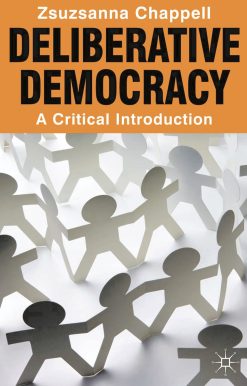Seedtime: On the History, Husbandry, Politics and Promise of Seeds
19.00 JOD
Please allow 2 – 5 weeks for delivery of this item
Description
Scott Chaskey—working farmer, poet, and spiritual father of the community farming movement—considers “the web of biodiversity and resilience at the heart of our cultural inheritance” by masterfully weaving history, politics, botany, literature, mythology, and memoir into a beautiful and instructive book.It’s hard to think of a subject more fundamental to the sustenance of the human race than seeds. Having coevolved with the Earth’s plants, insects, and animals, seeds are entwined with the core myths of ancient cultures and the development of human consciousness. Their story remains vitally important today, as the corporations that manufacture GMOs threaten our food security and the future of seed-cultivated agriculture.The stakes, for those concerned with preserving biodiversity and ecological integrity, are high. Balancing a wide view of politics and history, Chaskey alights from life on the farm he has cultivated for 25 years to conjure Gregor Mendel’s breeding experiments that yielded our modern understanding of genetics; he also introduces us to several “bioneers,” such as the geobotanist Nikolay Vavilov and agriculturalist Cary Fowler, who are preserving global biodiversity through seeds. Integrating scholarship with accessible storytelling, Seedtime is a celebration as well as a call to action urging us to renew our role as citizens of nature, in ecologist Aldo Leopold’s phrase, not as conquerors of it.
Additional information
| Weight | 0.4 kg |
|---|---|
| Dimensions | 2.11 × 14.61 × 22.15 cm |
| PubliCanadanadation City/Country | USA |
| by | |
| format | |
| Language | |
| Pages | 240 |
| publisher | |
| Year Published | 2014-1-21 |
| Imprint | |
| ISBN 10 | 1609615034 |
| About The Author | Scott Chaskey is a poet, farmer, and educator who for a quarter century has worked the land for the Peconic Land Trust at Quail Hill Farm in Amagansett, NY. A pioneer of the community farming movement, he is past president of the Northeast Organic Farming Association of New York and author of This Common Ground, a memoir. He lives in Sag Harbor, NY. |
“Brilliant book, highly important and beautifully written” —SOUTH SHORE PRESS“The book is a beautiful and poetic exploration of the history, husbandry, and promise of seeds. It is a celebration of the very essence of the cycles of nature…It is a book that you want to hold and read with time so as to savor the depth and richness of the words.” —PRETTY MEDICINE (Maria Bowling) |
|
| Excerpt From Book | Planting words, like seeds, under rock and fallen logs–letting language take root, once again, in the earthen silence ofshadow and bone and leaf.—David Abram, The Spell of the SensuousCHAPTER 1Furnished with Wings and PlumesENCAPSULATED IN EACH SEED is a story, a story held in a state of rest until released. Only with significant patience and effort can we interpret this language, which gradually is revealed as the cotyledons, or first leaves, unfold from a seed's invisible center. A plant's coming into being, or maturation, is such a quiet progression that we tend instead to focus on the fruit, the colorful prize of production and the vessel of taste. To grasp the whole story, however, we will have to look at the structure of a flower, how plants have evolved to attract pollinators, and how a flowering plant produces seed. Our entire food supply is a gift of the angiosperm revolution–the magnificent event that introduced flowering plants to the world 140 million years ago–and our health and food futures are entwined with the way in which we choose to nurture or manipulate the seeds of that natural revolution.I agree with the sentiment expressed in the opening pages of Henry Hobhouse's 1985 book Seeds of Change: " . . . the world cannot evolve solely through actions consciously willed by man." Hobhouse urges us not to dismiss plants as "less than fundamental to history." More recently, Michael Pollan, in The Botany of Desire, suggests that the plant world may have far greater control over us than we could ever imagine. Most of us, when we do think of this relationship at all, presume that we comfortably inhabit the role of conqueror.Years of working in the field with plants and planting seeds each season have taught me otherwise. Often, when I enter a field to inspect or to cultivate a given plant species, I am "called" to tend to another species I had forgotten or had passed over. Garlic is a crop that seems to dominate my entire work schedule–at least until I have weeded, fertilized, and mulched to the satisfaction of this allium (A. sativum var. ophioscorodon).It is because of my daily work in the fields that I am aware of this other time: seedtime. A farmer relies on both intuition and experience to build fertility into a field, to bring a crop to fruition, or to establish a field of grains–oats, buckwheat, rye, or red clover. It is much more difficult to discern the precise syllables latent within a seed embryo. To do that, or at least to attempt to, I am led beyond the crop rows to the adjacent hedgerow, where I can observe the beauty and diversity of wild seeds.We need wildness, but wildness needs space. It also, increasingly, needs us. In their book Shattering, longtime agricultural activists Cary Fowler and Pat Roy Mooney praise the value of diversity within agricultural systems:The future of agriculture and the very survival of crops depend not so much on the fancy hybrids we see in the fields, but on the wild species growing along the fence rows, and the primitive types tended by the world's peasant farmers in the centers of diversity.1Jack Harlan, agronomist, plant explorer, and author of Crops and Man, is even more vehement about the role of uncultivated species in our survival: "Wild relatives stand between man and starvation." His point is that plant breeders, professional and amateur alike, will always require genetic variation when selecting and breeding plants to build resistance to pests and disease, and that variation is often to be found in species growing on the edges of cultivated fields or on undeveloped or preserved land. The future of our food is quite literally in the hands of man, to conserve wildness not only in land but also in plants. These wild relatives provide resilience and inspiration to our inbred cultivars (those plants developed through systematic breeding).The story of seeds is now so interwoven with our own story, and of how we have chosen to manipulate our environment, that it behooves us to trace the evolutionary history of flowering plants and seeds through all the variations of dispersal. In my imagination, I am swept up on the wind within a galaxy of pollen grains–though in my study, I am content to follow Henry D. Thoreau through his work "The Dispersion of Seeds," as he records how a seed journeys by the "agency of wind, water, and animals." (Faith in a Seed, Thoreau's neglected manuscript published some 125 years posthumously in 1993, includes this essay.) The opening chapters of Darwin's On the Origin of Species (published in 1859), a book that strongly influenced Thoreau, also discuss the dispersion of plants and animals across the earth.2 Darwin's description of this process reveals breathtaking observational precision:Seeds are disseminated by their minuteness–by their capsule being converted into a light balloon-like envelope–by being embedded in pulp or flesh, formed of the most diverse parts, and rendered nutritious, as well as conspicuously colored, so as to attract and be devoured by birds–by having hooks and grapnels of many kinds and serrated awns, so as to adhere to the fur of quadrupeds–and by being furnished with wings and plumes, as different in shape as they are elegant in structure, so as to be wafted by every breeze.The variation in the shape and structure of seeds is a fascinating story in itself, and the diversity in their size is impressive. Orchids reproduce via microscopic seeds–one tropical orchid seed capsule can contain 3,750,000 seeds. At the other end of the spectrum, the planet's largest seed, the Seychelles nut (coco de mer), can weigh up to 45 pounds.THROUGHOUT MOST OF the history of agriculture, each farmer was by definition a seedsman. It was the man or, in many cases, the woman in the field who selected the strongest plants and collected and saved the seeds to ensure another harvest. The relative success of this vocation was as unpredictable as life itself–given the powerful influence of weather, affecting both plant growth and seed storage. But the point is that the knowledge of plants and food production was a shared knowledge among growers and eaters. Gradually, as we approached the era of industrialization and specialization, this fluency in our shared ecology slipped away, and with it an incalculable biodiversity. Seed companies eventually replaced farmers in the field as the keepers and purveyors of seed. As seed production became more centralized, on-farm (in situ) breeding and seed selection diminished, and the indigenous wisdom of generations began to fade. How many of us can name the difference between an open-pollinated plant and a hybrid, let alone understand the implications of our present industrial systems for our food supply? If we retrace the story of seeds to the waters and soil of origin, as if observing the emergence of seed leaves from an embryo, we will glimpse a shared identity. We are, after all, fellow travelers on this earth and dependent on each other.Our public debates–concerning health care, chronic disease, and obesity– are just now beginning to acknowledge the role of food and how we grow it. A recent letter from Slow Food USA begins with this:Our broken food system is at the heart of nearly every crisis we face. The way we eat and the way we farm are devastating our society, our health, and our planet. Americans of all ages are sick from diet-related disease, while overwhelming debts are pushing farmers out of work and pollution from industrial farms is contaminating our water, soil and atmosphere.The message is dire, but a "blessed unrest" (Martha Graham's words, the title of a recent book by Paul Hawken) is stirring, led by activists addressing an entrenched agricultural system and searching for a deeper ecological understanding.The value of conserving biodiversity cannot be overstated. (Biological diversity refers to the abundance of organisms that populate our earth; this includes species, genetic diversity, and ecosystem diversity.) Biodiversity is the source of our food, of the animals and plants that we have domesticated, and of plant-based medicines. Our increasing tendency to homogenize all aspects of our ecosystems limits our ability to adapt to ever-changing conditions of climate and culture. As sophisticated as we presume ourselves to be, it is estimated that to date we have identified only about 10 percent of all species on earth.It is incumbent upon us now to preserve those species that we have identified and to protect habitats where those undiscovered may still flourish. In February 2008, after 20 years of preparatory work, the first world seed bank was christened in Svalbard, Norway. The stated purpose of this seed bank, like that of the great Russian plant explorer Nikolai Vavilov's institute in early-20th-century St. Petersburg, is to preserve genetic diversity and protect our global food supplies. Svalbard's mission interprets the work accomplished on small farms and gardens throughout the globe and the efforts of a new breed of "bioneers." Seedsman and plant breeder Bryan Connolly has said, "Seed saving done well is at the heart of regenerating US agriculture." Bill McDorman, director of Native Seeds/SEARCH, stresses that it is up to ordinary farmers and gardeners to save our diversity while we still can, "one farmer, one field at a time." Tom Stearns, founder of High Mowing Organic Seeds, a Vermont company whose catalog includes only organic seeds, comments: "I see my work focusing on helping people rebuild their local food systems. Seeds are an important, yet easy tool to recognize the [value] of these systems, and seeds are one of the mediums by which this message can be conveyed." Ethnobotanist and author Gary Paul Nabhan writes: "Modern agriculture has let temporary cheap petrochemicals and water substitute for the natural intelligence–the stored genetic and ecological information–in self-adjusting biological communities." A significant counterculture of seed activists is now conducting field research based on that natural intelligence.WITNESSING THE TRANSITIONS of the seasons, I hope to keep my eyes open to what the day reveals–not as an aesthetician but as a seedsman inspired by the stories held within silt loam and the fiber of roots, stems, and leaves. As Thoreau described it: "The scholar's and the farmer's work are strictly analogous." In "The Dispersion of Seeds," he praises the Old World's recognition of the essential, inherent value of seed, contrasting it with the inability of the New World citizen (in the 19th century) to recognize that a tree is actually born of a seed. My work in the fields, and in the classroom, is dedicated to revealing this connection: the interrelation of things.1 A hybrid, in this specific sense, is the progeny of a cross between two varieties or races of the same species, which themselves have been produced by repeated self-fertilization or inbreeding. Hybrid plants and the centers of diversity will be discussed in a later chapter.2 As I was reviewing this chapter, I traveled once more to London and met a family friend in Piccadilly. She revealed that her literary agency was located in a nearby building still occupied by the oldest publishing house in England, John Murray. Sensing my interest, she invited us to meet the ninth-generation descendant of Mr. Murray. In a spacious room packed with leather-bound tomes, he introduced us to a long line of authors and exclaimed, while pointing to an austere oil portrait above the central fireplace: "Here is perhaps our most well-known of writers . . . the author of On the Origin of Species!" |
Only logged in customers who have purchased this product may leave a review.






Reviews
There are no reviews yet.